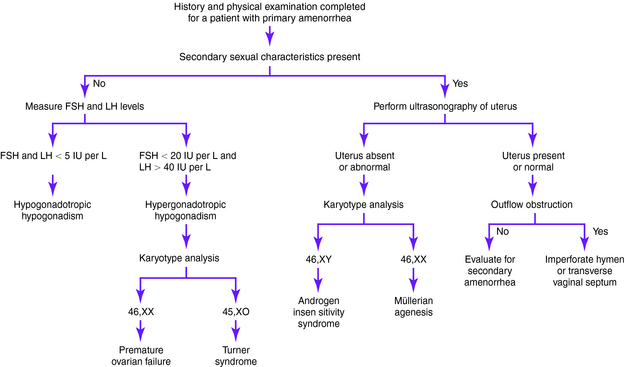Chapter 4 AMENORRHEA: PRIMARY
Primary amenorrhea is defined as the absence of menses by 16 years of age in the presence of normal growth and secondary sexual characteristics or lack of menses by 14 years of age in the absence of secondary sexual characteristics. In the classification of primary amenorrhea, hypogonadism refers to gonads that are not functioning, and this condition is associated with a hypoestrogenic state; eugonadism refers to gonads that maintain normal steroidogenesis, and this condition is associated with a well-estrogenized state. An evaluation of breast development can be used to determine a patient’s estrogen status. The pelvic examination then further narrows the potential causes by determining the presence or absence of a normal mullerian system.
The first step in the evaluation of primary amenorrhea (Fig. 4-1) is documentation of the history and a physical examination. If secondary sexual characteristics are not present, follicle-stimulating hormone (FSH) and luteinizing hormone (LH) levels should be measured. FSH and LH levels lower than 5 IU/L indicate hypogonadotropic hypogonadism. If the FSH level exceeds 20 IU/L and the LH level exceeds 40 IU/L, hypergonadotropic hypogonadism is present; in that case, karyotype analysis is indicated.

Figure 4-1. Evaluation of primary amenorrhea.
(From Master-Hunter T, Heiman DL: Amenorrhea: evaluation and treatment. Am Fam Physician 2006; 73:1374-1382.)



